

Heaton, Butler and Bayne were a British firm who produced stained-glass windows from 1862 to 1953. [1] [2]


Heaton, Butler and Bayne were a British firm who produced stained-glass windows from 1862 to 1953. [1] [2]
Clement Heaton (1824–82) [3] founded his own stained glass firm in 1852, joined by James Butler in 1855. Between 1859 and 1861 they worked alongside Clayton and Bell and were joined by Robert Turnill Bayne (1837–1915), who became their sole designer and a full partner in the firm in 1862. The firm was known as Heaton, Butler and Bayne from 1862.
His windows show strong design and colour, and are often recognisable by the inclusion of at least one figure with Bayne's features and long beard. They established their studio in Covent Garden, London, and went on to become one of the leading firms of Gothic Revival stained glass manufacturers, whose work was commissioned by the principal Victorian architects. A change in direction came with their production of windows to the designs of Henry Holiday in 1868, which show a more classical influence at work. During a long career, the firm produced stained glass for numerous churches throughout the Britain and the Empire, as well as the United States.
Westminster Abbey includes a Heaton, Butler and Bayne window, installed in 1868, an early example of the work of Henry Holiday. Also the stained glass in the east window of the Parish Church of St Mary Magdalene, Gillingham. [4] Other windows by this firm are in Wimborne Minster 1857, Peterborough Cathedral 1864 and St Mary's Parish Church, Hampton c1888. A documentary film, Stained Glass Masters: Heaton, Butler and Bayne, was produced in 2000 by the film maker Karl Krogstad. The documentary was narrated by Edgar Award winning author Burl Barer.


England
Northern Ireland
Wales
Canada
France
Russia
Switzerland
United States
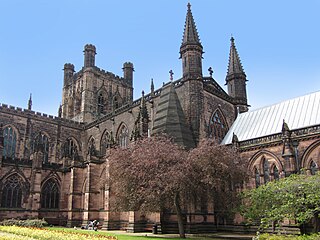
Chester Cathedral is a Church of England cathedral and the mother church of the Diocese of Chester. It is located in the city of Chester, Cheshire, England. The cathedral, formerly the abbey church of a Benedictine monastery dedicated to Saint Werburgh, is dedicated to Christ and the Blessed Virgin Mary. Since 1541, it has been the seat of the Bishop of Chester.

The Church of All Hallows is in Allerton, Liverpool, England. It is recorded in the National Heritage List for England as a designated Grade I listed building, and is an active Anglican parish church in the diocese of Liverpool, the archdeaconry of Liverpool and the deanery of Liverpool South – Childwall.
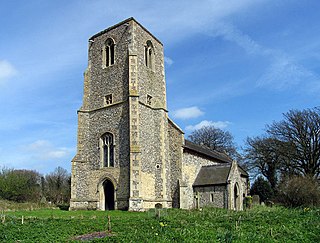
Dunton is a village and civil parish in the North Norfolk district, in the county of Norfolk, England. It is located about 5 kilometres (3.1 mi) west of Fakenham and 41 kilometres (25 mi) north-west of Norwich.
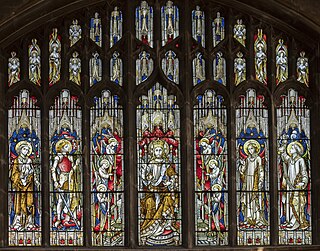
Hardman & Co., otherwise John Hardman Trading Co., Ltd., founded 1838, began manufacturing stained glass in 1844 and became one of the world's leading manufacturers of stained glass and ecclesiastical fittings. The business closed in 2008.

Charles Eamer Kempe was a British Victorian era designer and manufacturer of stained glass. His studios produced over 4,000 windows and also designs for altars and altar frontals, furniture and furnishings, lichgates and memorials that helped to define a later nineteenth-century Anglican style. The list of English cathedrals containing examples of his work includes: Chester, Gloucester, Hereford, Lichfield, Wells, Winchester and York. Kempe's networks of patrons and influence stretched from the Royal Family and the Church of England hierarchy to the literary and artistic beau monde.

A revival of the art and craft of stained-glass window manufacture took place in early 19th-century Britain, beginning with an armorial window created by Thomas Willement in 1811–12. The revival led to stained-glass windows becoming such a common and popular form of coloured pictorial representation that many thousands of people, most of whom would never commission or purchase a painting, contributed to the commission and purchase of stained-glass windows for their parish church.
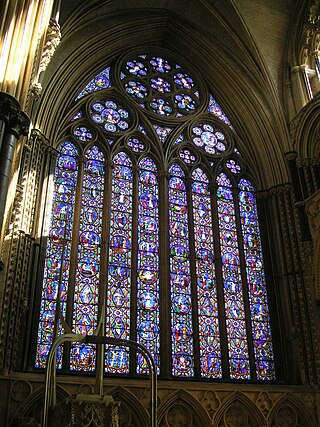
Ward and Hughes was the name of an English company producing stained-glass windows.

Clayton and Bell was one of the most prolific and proficient British workshops of stained-glass windows during the latter half of the 19th century and early 20th century. The partners were John Richard Clayton (1827–1913) and Alfred Bell (1832–1895). The company was founded in 1855 and continued until 1993. Their windows are found throughout the United Kingdom, in the United States, Canada, Australia and New Zealand.
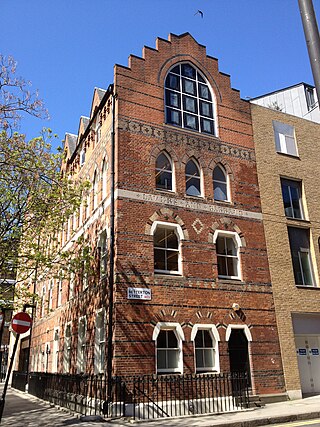
Lavers, Barraud and Westlake were an English firm that produced stained glass windows from 1855 until 1921. They were part of the 19th-century Gothic Revival movement that had a significant influence on English civic, ecclesiastical and domestic architecture, and on the manufacture and use of stained glass as decoration and as glazing.

Shrigley and Hunt was an English firm which produced stained-glass windows and art tiles.

St Mary's Church is in the village of Pulford, Cheshire, England. The church is recorded in the National Heritage List for England as a designated Grade II* listed building. It is an active Anglican parish church in the diocese of Chester, the archdeaconry of Chester and the deanery of Chester. Its benefice is combined with that of St Mary, Eccleston.

John Prichard was a Welsh architect in the neo-Gothic style. As diocesan architect of Llandaff, he was involved in the building or restoration of many churches in south Wales.

Belmont Abbey, in Herefordshire, England, is a Catholic Benedictine monastery that forms part of the English Benedictine Congregation. It stands on a small hill overlooking the city of Hereford to the east, with views across to the Black Mountains in Wales to the west. The 19th century Abbey also serves as a parish church.

St John the Baptist Church is a Grade I listed parish church in Cardiff, Wales, the only church dating to pre-Medieval times in Cardiff city centre and the only medieval building other than Cardiff Castle.
Cox & Barnard Ltd was a stained glass designer and manufacturer based in Hove, part of the English city of Brighton and Hove. The company was founded in Hove in 1919 and specialised in stained glass for churches and decorative glass products. Many commissions came from Anglican and Roman Catholic churches in the English counties of East Sussex, West Sussex and Kent. The company was also responsible for six war memorial windows at an Anglican church in Canada, made from shards of glass collected from war-damaged church windows across Europe.

All Saints' Church, Winthorpe is a Grade II listed parish church in the Church of England in Winthorpe, Nottinghamshire, England. The current building, the construction of which was completed in 1888, is at least the third version of the church, which dates back to at least the early 13th century. All Saints' Church was commissioned by the church rector, Edward Handley, in memory of one of his relatives.
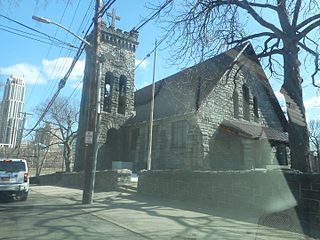
The Parish of St. Gabriel and of St. Joseph was formed in August 2015 with the merger of the Territorial parish of St. Gabriel on Division Street with the personal parish of St. Joseph on Washington Avenue, both in New Rochelle, NY. St. Gabriel is the parish church. However, St. Joseph "will maintain a regular schedule of Masses and the celebration of other sacraments". Both parishes were established around 1900 through the generosity of the Iselin family.

James Henry Nixon (1802–1857) was an illustrator and painter during the Victorian period, who worked in the firm Ward and Nixon painting stained glass windows. James Henry Nixon was a protégé of Charles Winston, who praised Nixon's work at Westminster Abbey and Church of Christ the King, Bloomsbury. The company Ward and Nixon was followed by Ward and Hughes.